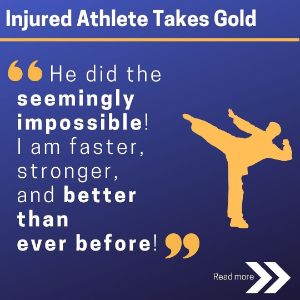Timing
Treatment Timing
Timing of AC joint surgery is critical as the procedure for an acute repair is much simpler than the reconstruction required for a chronic separation.
- ACUTE REPAIR
- Once an AC joint has a complete separation, the deforming forces of the arm prevent any chance of reducing the dislocation, much less the proper healing of the torn ligaments. The primary goal of an acute repair is to reduce the deformity with a mechanical device so that the tissues can heal. An acute disruption of the ligaments provokes an intense healing response in the body. If the bones can be brought into alignment and held there reliably, natural ligament healing can occur. In the early period after a complete separation, the ends of the ligaments can also be sewn together reinforcing and adding to the body’s healing response. Early attempts to do this with simple screw fixation were largely successful; however, the rigidity of this construct did lead to hardware breakage and occasion slippage. This technique is extremely strong and rigid in the direction of the deformity but allows for motion in other planes. Thus ligament healing can occur without overly constraining the anatomy.
- The technique is simple, restores the anatomy to its original state, and requires no grafting or other tissue transfer. Once the initial period (about 3-6 weeks) of healing response has passed, however, a more complex procedure is required.
- CHRONIC REPAIR
- Once the initial period of healing response has passed the torn ligaments ends scar up into contracted lumps of scar tissue and the injury site no longer has the biologic ability to heal. In this setting, new ligament tissue has to be brought into the repair site and sewn into place, requiring an extended period of healing and tissue incorporation before it can function normally. While using large cadaver tendon grafts can be used it is equally effective and much simpler to use local tissue to augment the repair. This can be done with detaching the CA ligament from the acromion and fixing it to the clavicle. This does not require using any donor graft and does not require additional surgical incisions or dissection. Dr. Struhl’s long-term clinical study has shown this to be highly effective and reproducible. While removal of the distal clavicle has been recommended as a part of other techniques, Dr. Struhl prefers to leave the clavicle intact as it adds stability to the repair and does not result in any negative long-term consequences.
Surgical Decision Making
Making the decision whether or not to have ac joint separation surgery in some cases might feel to be a complicated one. Instances of very severe deformity (grade 4 and grade 5 separations) and for patients who live an active lifestyle surgery is strongly recommended. For those who are less active or with only a grade 2 separation, deciding on surgery is an individual one.
Please keep in mind that an unsuccessful attempt with a nonsurgical treatment does, however, result in the need for a more complex surgical procedure. Therefore, every patient needs to take into consideration their needs and expectations carefully before deciding on what is best for them.
Contact our practice today to schedule a consultation with Dr. Struhl.




